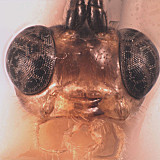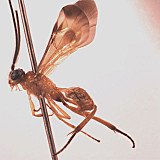Physotarsus castilloi Gauld, 1997
Physotarsus castilloi: Yu and Horstmann 1997: 455 (catalog); Zhaurova and Wharton 2009: 9-10, 15-16 (redescription, inclusion in key to species).
This species is most similar to P. claviger and P. bonillai in body sculpture and form of the clypeal margin. The fore wing of P. castilloi is distinctly yellow, with the apex infumate, similar to P. adriani, whereas the base of the wing is hyaline in P. bonillai and P. claviger.
There are no specimens currently determined for this OTU, or those specimens determined for this OTU are not yet mappable.
This material is based upon work supported by the National Science Foundation under Grant Number DEB 0328922 with REU supplement DEB 0723663.
Any opinions, findings, and conclusions or recommendations expressed in this material are those of the author(s) and do not necessarily reflect the views of the National Science Foundation.



